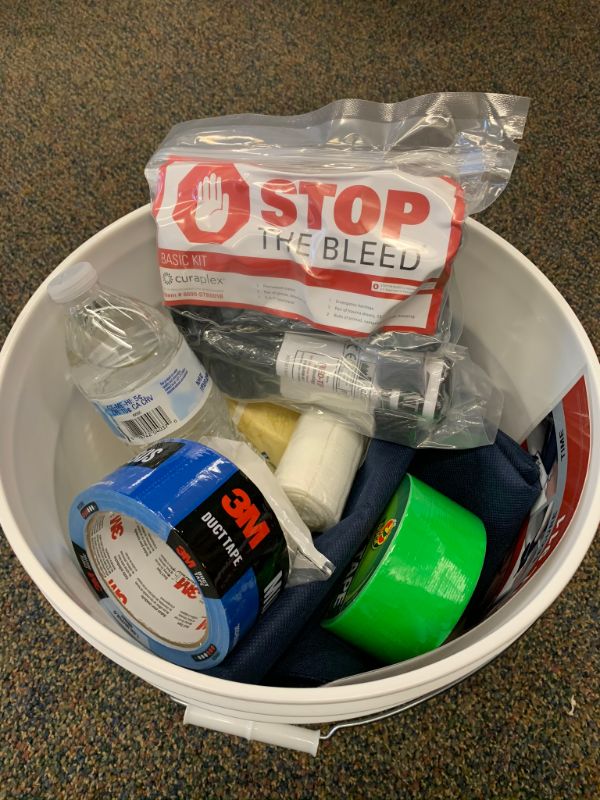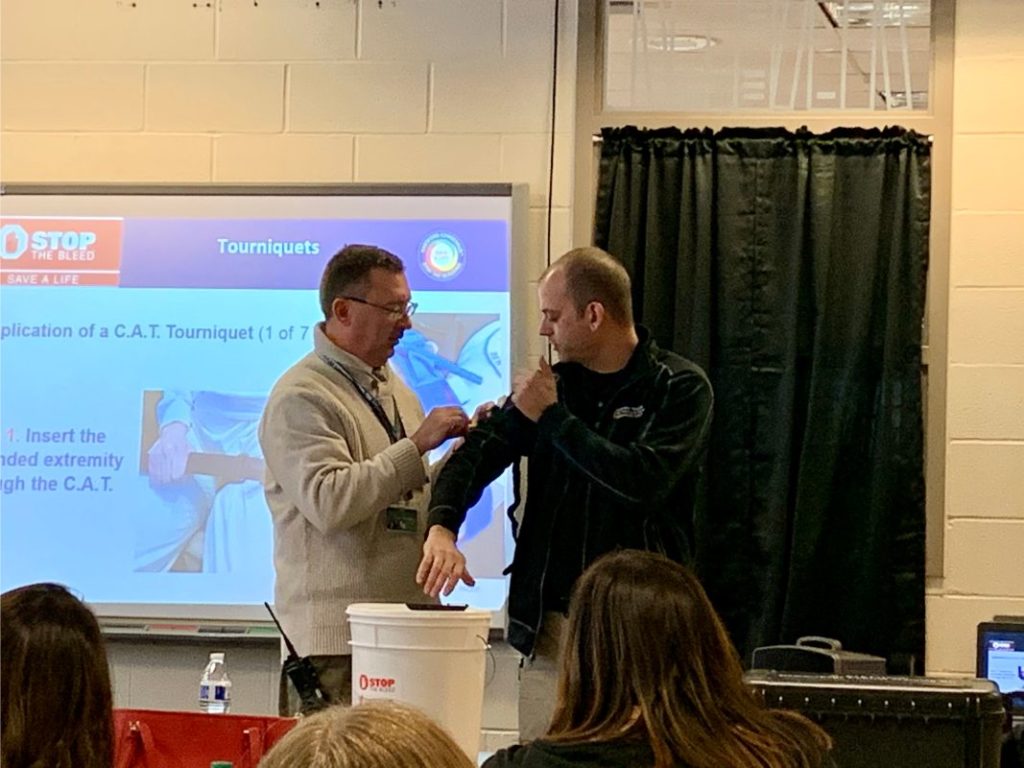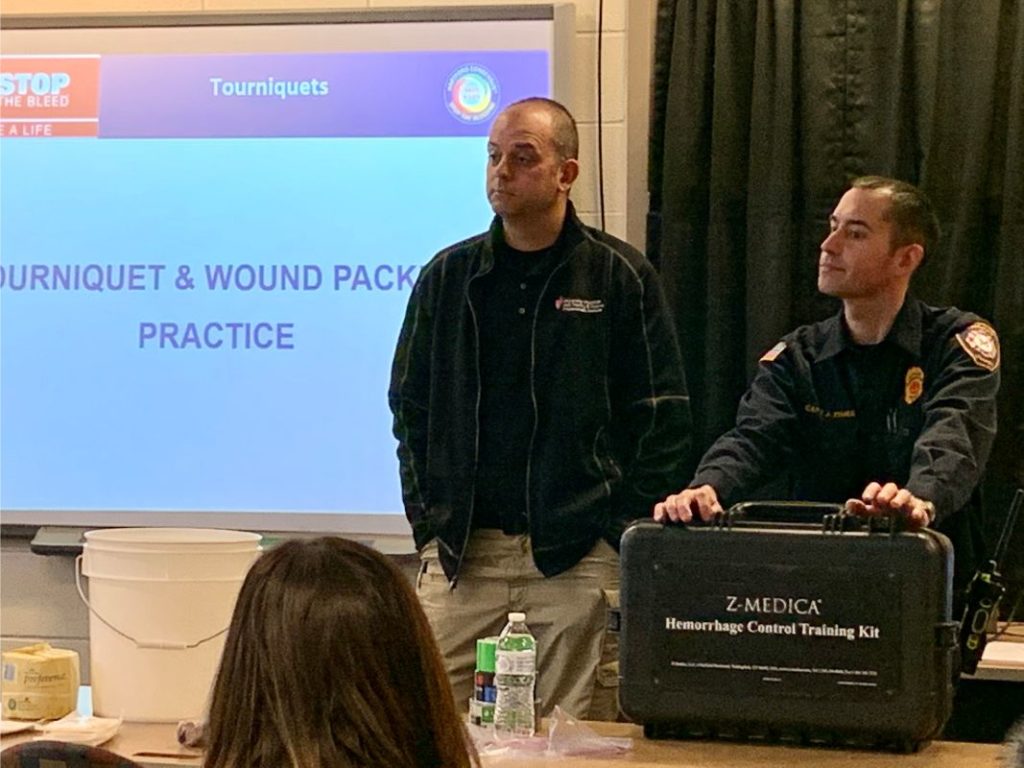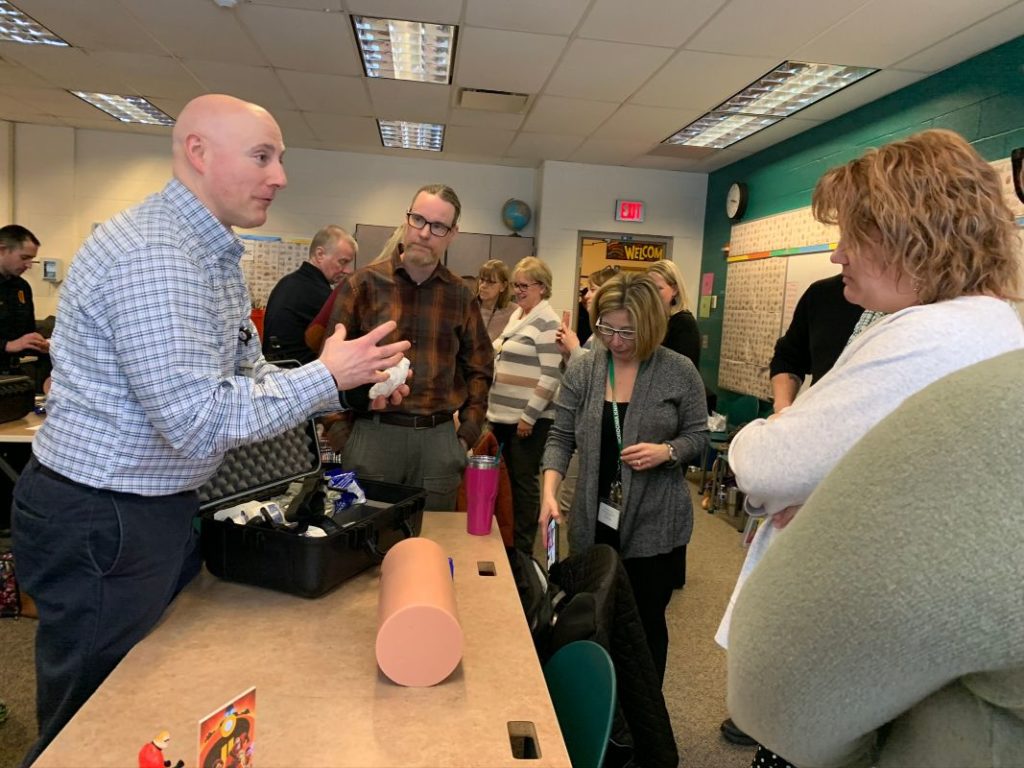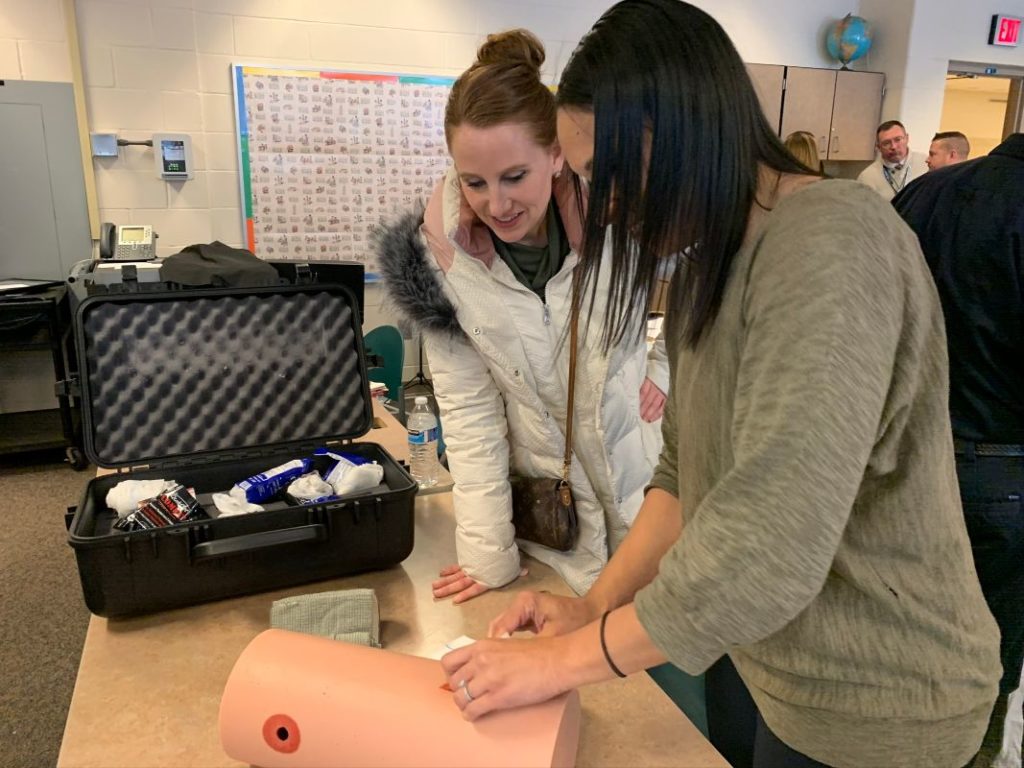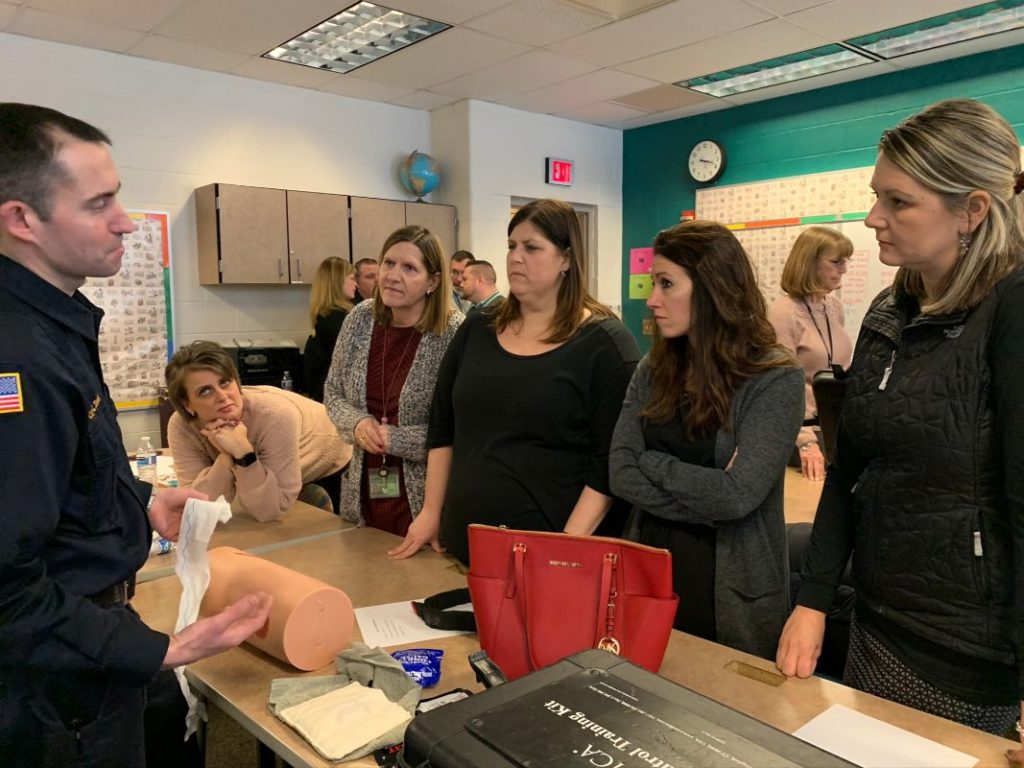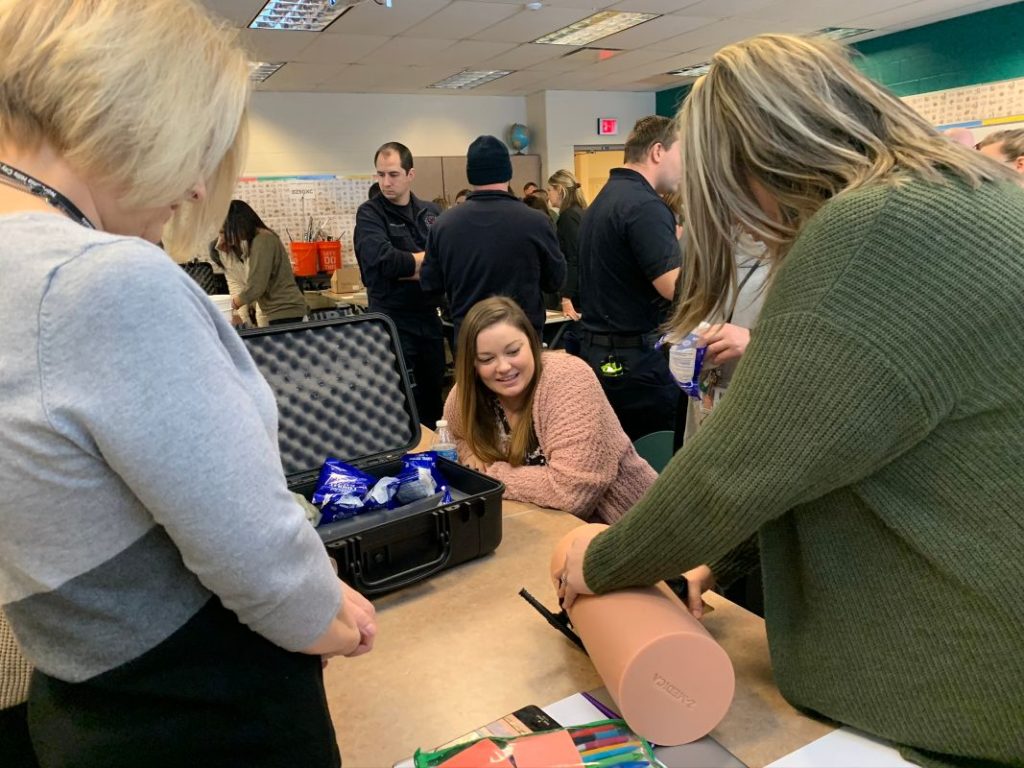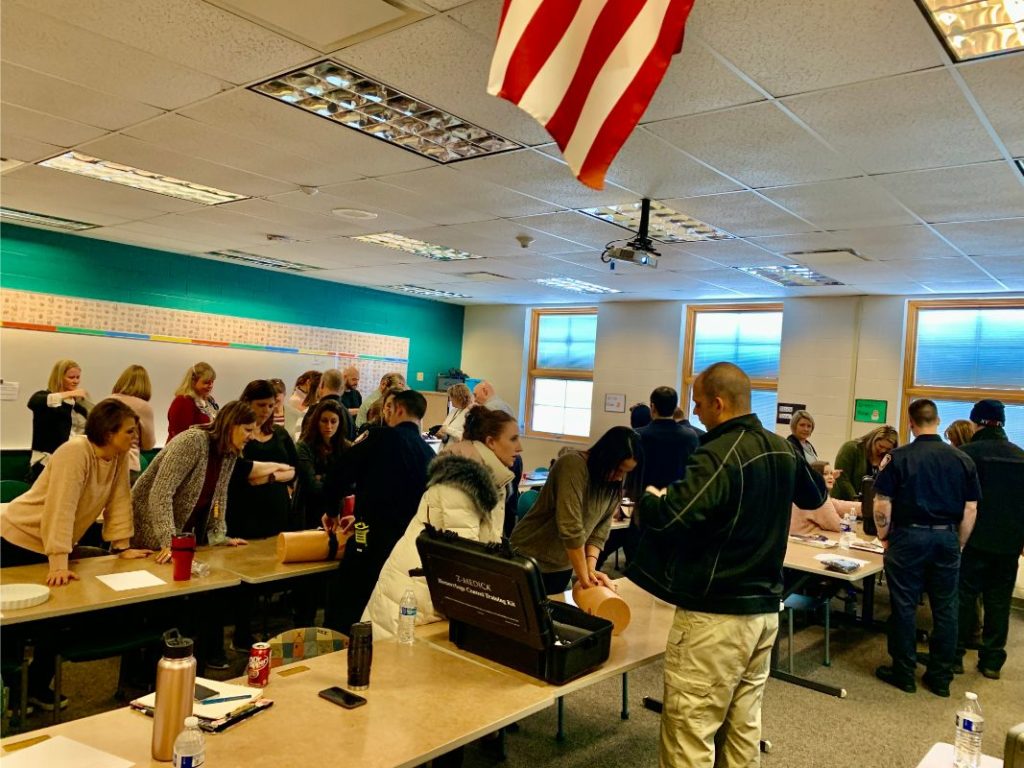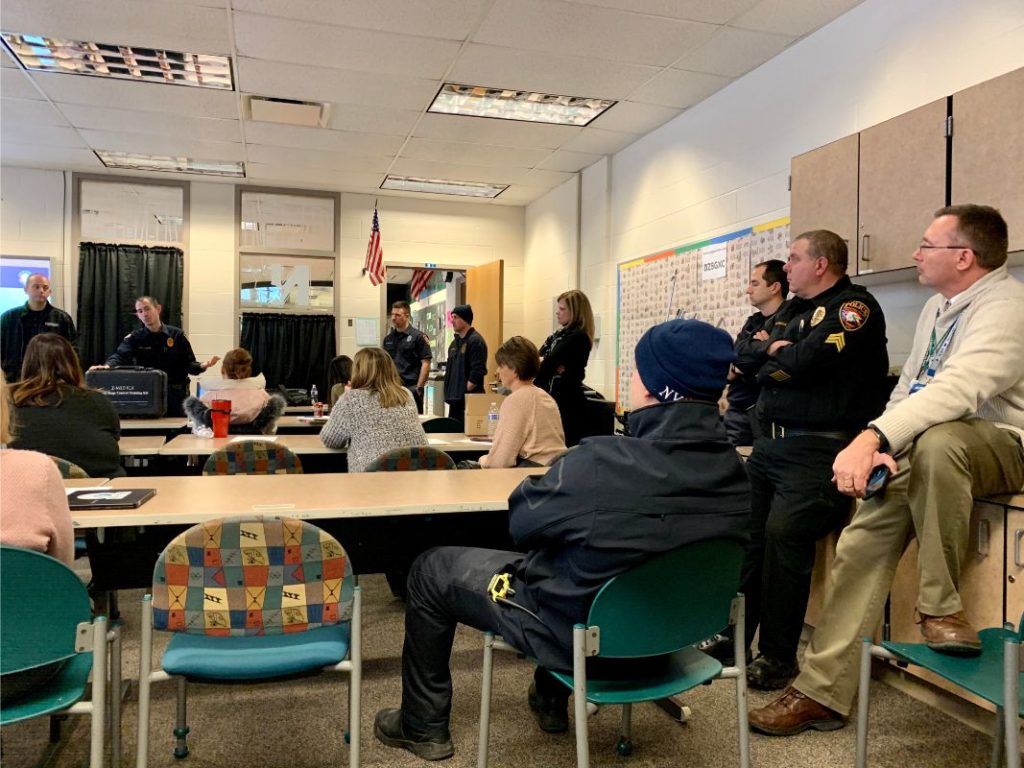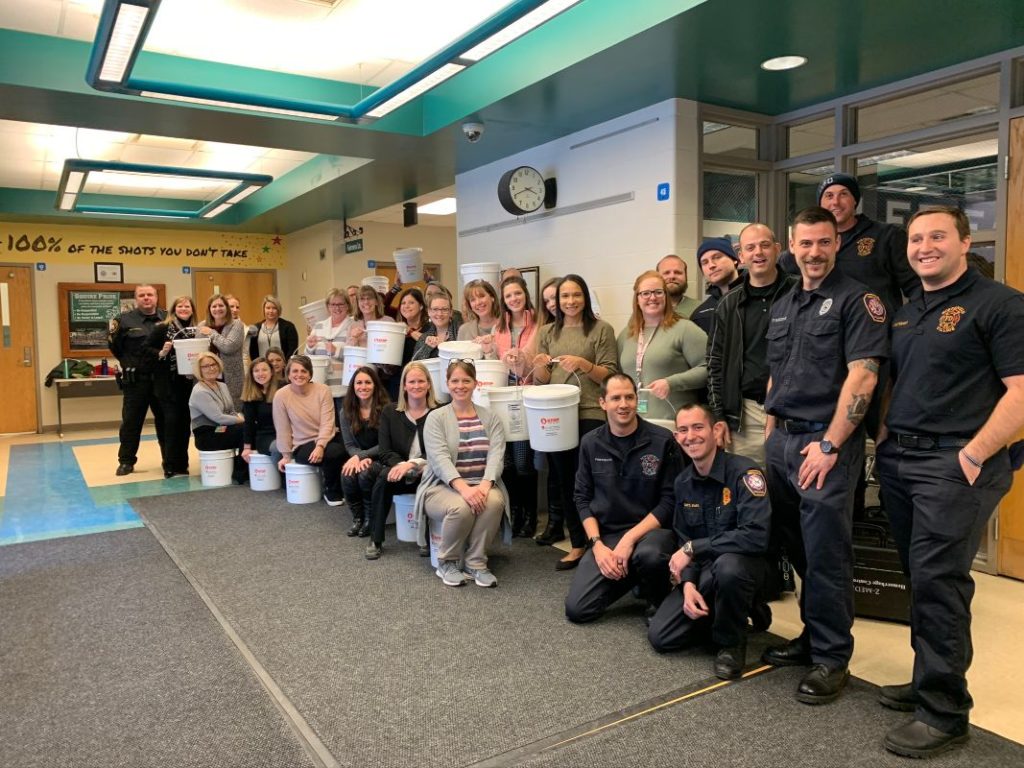By Julie D’Aloiso
There are some training classes you attend and hope to never use. Last Thursday, University Hospitals and the Village of Northfield Fire Department presented “Stop the Bleed” training to the staff at Lee Eaton Elementary.
This is some of the information that was presented:
(Source University Hospitals)
Motivated by the 2012 tragedy in Sandy Hook and many other incidents that have occurred in the ensuing years the Hartford Consensus was convened to bring together leaders from law enforcement, the federal government, and the medical community to improve survivability from manmade or natural mass casualty events.
The resulting injuries from these events generally present with severe bleeding, which if left unattended, can result in death.
The participants of the Hartford Consensus concluded that by providing first responders and civilian bystanders the skills and basic tools to stop uncontrolled bleeding in an emergency situation, lives would be saved. The first responder program has received a very good response and is widely being used across the country. The next step is to focus on the need of civilian bystanders.
A Call for Resilience
Civilians need basic training in Bleeding Control principles so they are able to provide immediate, frontline aid until first responders are able to take over care of an injured person. Due to many situations, there may be a delay between the time of injury and the time a first responder arrives at the scene. Without civilian intervention in these circumstances, preventable deaths will occur.
Along with The American College of Surgeons Committee on Trauma, University Hospitals is helping to lead the effort to save lives by teaching the civilian population to provide a vital immediate response to stop uncontrolled bleeding in emergency situations. This will be accomplished by the development of a comprehensive and sustainable bleeding control training program for civilians that will inform, educate and empower the 300+ million citizens of the United States.
See info card about Stop the Bleed (click for larger view).
University Hospitals also provided buckets in which includes all the supplies needed to help victims. For example: many items used to pack a wound, tourniquets, duct tape, rope, cloth, toilet paper and water. There are enough buckets to have one in every classroom at Lee Eaton.
Locally, many other schools received this training as well.
How did Lee Eaton get involved? Last year, Northfield Village Fire Captain Joe Zemek was working at the ER in Ahuja when the Northfield Village Squad transported a student from Lee Eaton. While he was caring for the patient, he met with Carol Tonsing (the Assistant principal at Lee Eaton) and another staff member. They discussed various training classes that were available through University Hospitals. Joe volunteered to setup classes with the school.
All of the equipment and training classes were donated by University Hospitals as part of their community outreach and training program.
Northfield Village Police School Resource Officer SGT Zambach also played a pivotal role in setting up the program. Dan Ellenberger is the Director of the EMS Institute also was instrumental in the set up and Justin Magill led the training at the school. Without these key people, the training classes would not have been a success.
There have been other training classes at Lee Eaton. For example, Active Threat/Shooter Training. This “Stop the Bleed” training was the next step in being prepared. There are more training classes planned for CPR and AED. The goal is to be prepared for a variety of emergencies.




